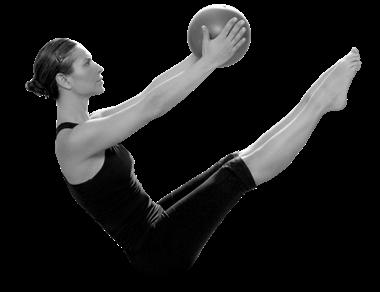
3 minute read
A Balanced Approach
BY LINDSEY JOHNSON, M.S. | ILLUSTRATIONS BY GRACE DOWNEY
According to the Oxford English Dictionary, balance
is defined as an even distribution of weight enabling someone or something to remain upright and steady. It is balance that allows us to walk without stumbling and maintain an upright posture. Sometimes our balance may not be up to par, which can be caused by a variety of reasons, such as viral or bacterial infections in the inner ear, poor posture, certain medications, poor circulation, irregularities in blood pressure and head injury. Sometimes balance issues can stem from tight or underused muscles. This is why it is important to ensure that the body is symmetrically strong. As we age, unfortunately, balance tends to become more unsteady. Poor balance can lead to falls and injury, which can be especially detrimental in older adults.
The good news is that there are some simple ways that one can improve balance using minimal to no equipment. Practicing balance through the use of movement and isolating one side of the body at a time can work wonders for improving overall balance.
TAI CHI
Tai Chi is an ancient Chinese martial art and form of gentle movement. Tai Chi has also been called a type of meditation for the focus on breathing and slow, controlled movements. Tai Chi is suitable for all levels and is often popular among older adults.


YOGA
Yoga can help with balance and coordination through movements that help build strength. Yoga is also adaptable for all levels and can be completed in a chair, standing or on the floor.


PILATES
Pilates is a type of exercise that focuses on strengthening the core by building flexibility, strength and improving posture. Pilates is popular among both younger and older adults as it is a gentle form of exercise.
What Exercises Can I Do To Improve My Balance?
1 | Weight Shifts A simple movement that can be done anywhere is shifting all your weight from one foot to the other. Aim to stand on one foot only for up to 30 seconds, then switch legs. If this is challenging at first, you may rest your hand lightly against a wall or chair to ensure you don’t fall. Keep a slight bend in the knee that is bearing the weight.
2 | Walk the Line Walk in a straight line placing the heel of one foot directly to the toe of the other foot for 20 steps at a time. Keep your gaze up and your core tight. If you need to use a wall for additional support, you may do so.
3 | Back Extension Lying flat on your stomach with arms at your side, palms facing up, gently lift your torso, legs, and arms a couple of inches off the ground. Hold for 10 seconds, then lower to the ground. Complete a set of 10, rest, then repeat.
4 | Single Leg Romanian Deadlifts The single leg Romanian deadlift is a more advanced movement that focuses on strengthening the posterior chain and helping to improve balance. This may be completed with or without weight. If using weight, place a dumbbell or kettlebell in your right hand while balancing on your left leg, which is slightly bent. Slowly lower your body forward, moving the weight toward the ground while your right leg lifts in the air behind you. Return to standing. Complete 10-15 repetitions, then switch to the other side. You can also complete the movement the same way without an object in your hand.
5 | Calf Raises Using a chair for support if necessary, stand with feet shoulder width apart and lift both feet off the ground until you are standing on your toes. Hold at the top for one second before lowering back to the ground. Aim for two sets of 10-15 calf raises. These can also be done as an isolated movement, doing calf raises with only one leg at a time.
Balance is an important part of our daily lives. Desk jobs, inactivity and long commutes can all put us at increased risk for postural deficiencies and balance issues. Enhancing balance helps us function well with daily activities and helps prevent falls and injuries. Spending a few minutes daily or a few times a week to focus on balance will create lasting benefits.






